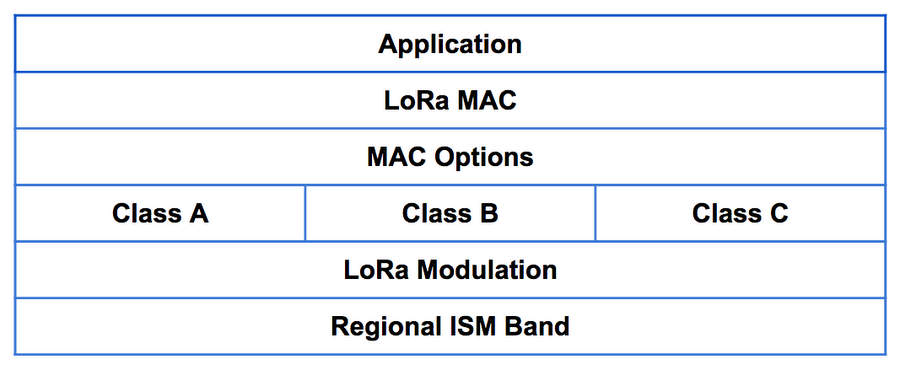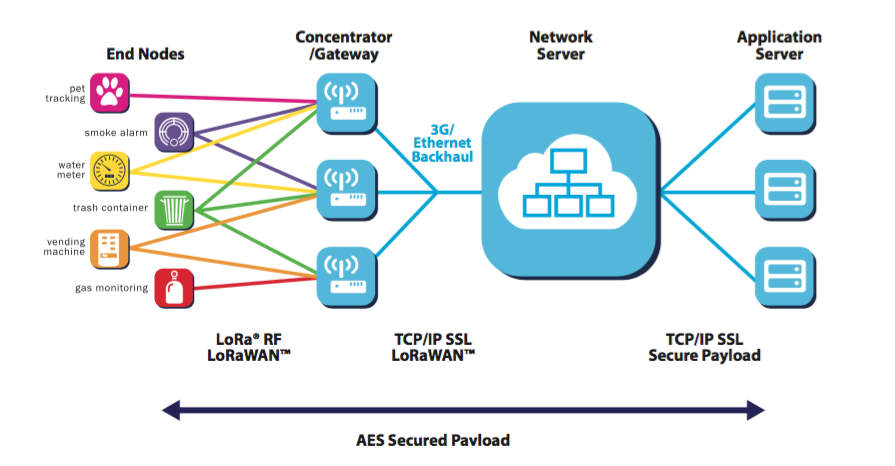LoRaWAN defines the communication protocol and the system architecture, while LoRa defines the physical layer.
Here is a typical system architecture of a LoRaWAN node.

LoRa Network Architecture
Most of the modern IoT LAN technologies use mesh network architecture. By using mesh network, the system can increases the communication range and cell size of the network. But, nodes in a mesh network has additional responsibility of forwarding messages to other nodes, typically irrelevant to them. This affect the device battery life significantly.
LoRaWAN uses star topology as it increases battery lifetime when long-range connectivity is used.

LoRa network consists of several elements.
LoRa Nodes / End Points: LoRa end points are the sensors or application where sensing and control takes place. These nodes are often placed remotely. Examples, sensors, tracking devices, etc.
LoRa Gateways: Unlike cellular communication where mobile devices are associated with the serving base stations, in LoRaWAN nodes are associated with a specific gateway. Instead, any data transmitted by the node is sent to all gateways and each gateway which receives a signal transmits it to a cloud based network server.
Typically the gateways and network servers are connected via some backhaul (cellular, Wi-Fi, ethernet or satellite).
Network Servers: The networks server has all the intelligence. It filters the duplicate packets from different gateways, does security check, send ACKs to the gateways. In the end if a packet is intended for an application server, the network server sends the packet to the specific application server.
Using this type of network where all gateways can send the same packet to the network server, the need of hand-off or handover is removed. This is useful for asset-tracking application where assets move from one location to another.
LoRa Device Class
Like other networks, where end devices can have different capabilities depending on devices classes, end nodes in LoRaWAN network can have different device classes.
Each device class is a trade-off between network downlink communication latency verses battery-life.
| Class A | Most suitable for battery power sensors
|
| Class B | End-devices with schedule receive slots
|
| Class C | End-device with maximal receive slots
|
